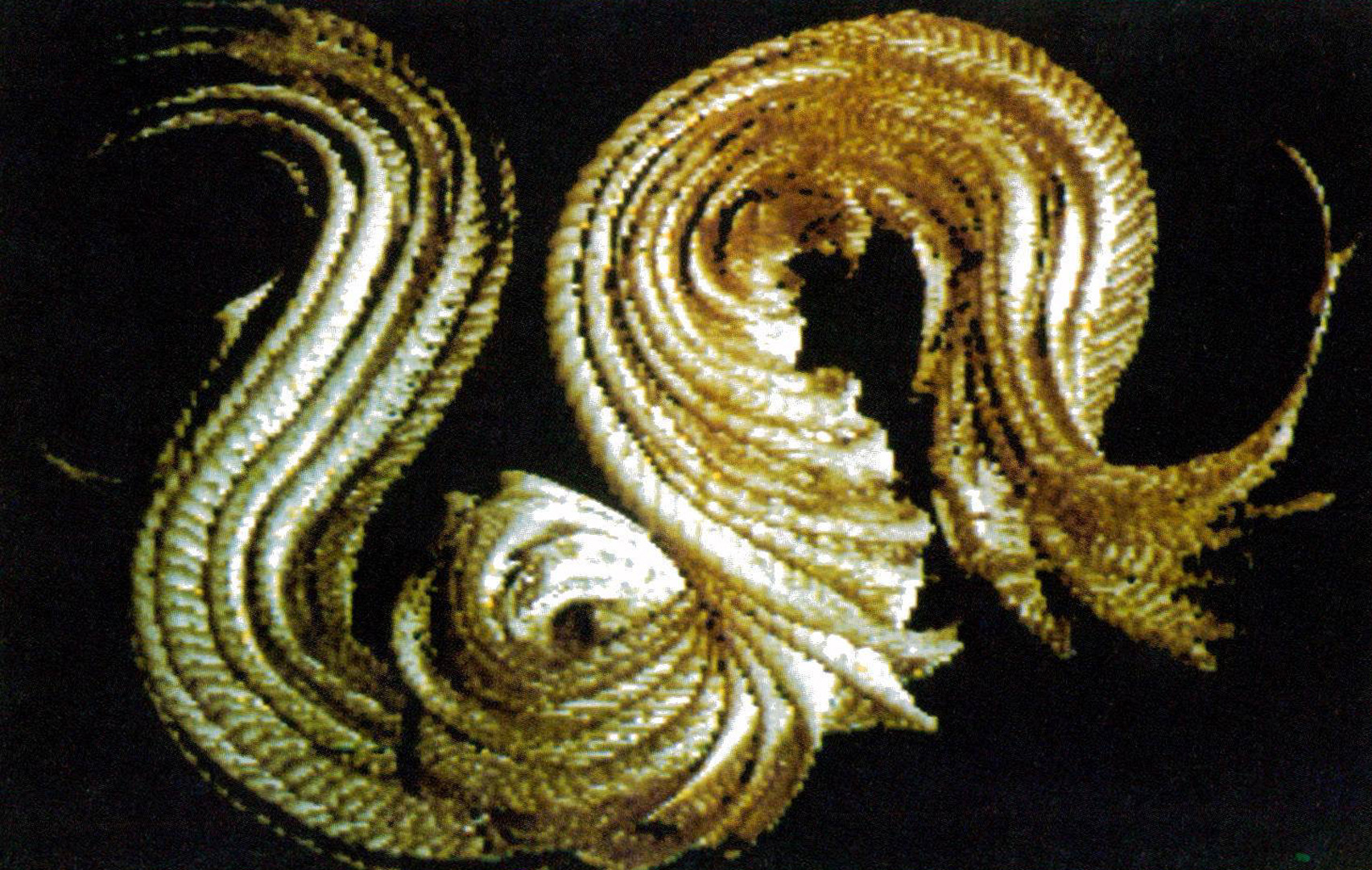“The drawing prism: a versatile graphic input device” by Greene
Conference:
Type(s):
Title:
- The drawing prism: a versatile graphic input device
Presenter(s)/Author(s):
Abstract:
Artists using conventional computer graphic input devices cannot produce the same visual effects which they can with traditional tools and media. The drawing prism is a new device which allows people to draw or paint directly into a frame buffer, using brushes, their hands, or a variety of other objects. These objects can be manipulated to achieve continuously adjustable line qualities and textures, in the same ways that artists have traditionally used their hands and tools.The device uses one face of a large transparent prisms as a drawing surface. A video camera views that surface from an angle such that it can only image the points of optical contact between drawing tools and the surface. These images are digitized and processed in real time so as to build up a drawing as the tools are moved along the surface. A layer of transparent liquid helps tools make optical contact with the drawing surface. Any light colored object can thus be used as a drawing tool.Details of the current implementation are provided along with suggestions for improving its resolution. Combinations of visual effects previously restricted to either traditional media or computer graphics are described and illustrated.
References:
1. Lewis, John Peter. Texture Synthesis for Digital Painting. Computer Graphics Vol. 18, No. 3 (1984), pp. 245-252.
2. Scmandt, Christopher. Spatial Input/Display Correspondence in a Stereoscopic Computer Graphic Workstation. Computer Graphics Vol. 17, No. 3 (1983), pp. 253-257.
3. Minsky, Margaret R. Manipulating Simulated Objects with Real-world Gestures using a Force and Positi~m Sensitive Screen. Computer Graphics Vol. 18, No. 3 (1984), pp. 195-203.
4. Bowie, Henry P. On the Laws of Japanese Painting. Dover Publications, New York, NY, 1952, p.34 (originally published by P. Elder, San Francisco, CA, 1911).
5. Sears, Francis. Optics. Addison-Wesley Press, Cambridge, MA, 1949, pp. 43-44.
6. i-leckbert, Paul S. and Hanrahan, Pat. Beam Tracing Polygonal Objects. Computer Graphics Vol. 18, No. 3 (1984), pp. 1 ! 9-127. See their Figure 4.
7. Javril, Marci, Tannenhaum, Ed, Greene, Richard and Schier, Jeff, Technological Feets. Siggraph ’84 Electronic Theater, live performance, catalog p. 14 and back cover photo.
8. Tannenbaum, Ed. Recollections. Exploratorium, San Francisco, CA, permanent exhibit, installed 1982.
9. Catich, Edward M. The Origin of the Serif. Catfish Press, Davenport, Iowa, 1968.
10. Whitney, John. Digital Harmony. McGraw-Hill, Peterborough, NH, 1980, pp. 177,216-217, & 225.
11. Service Manual, TC 2000 Series CCTV Cameras. RCA Corporation, Lancaster, PA, 1981, pp. 2 & 29.
12. Ciarcia, Steve. Build the Micro D-Cam Solid-State Video Camera. Byte Vol. 8, No. 9 (1983), pp. 20-31.
13. Recent communication from the U. S. Patent Office indicates that Robert E. Mueller was awarded patent #3,846,826 on Nov. 5, 1974 for a “‘Direct Television Drawing and Image Manipulating System”. it uses an internally reflecting prism to accept graphic input from brushes, fingers, and other objects. Mueller used a flying-spot scanner and photomultiplier instead of a camera, and his device has a different geometry from that described here, but it is based on the same optical principles.





